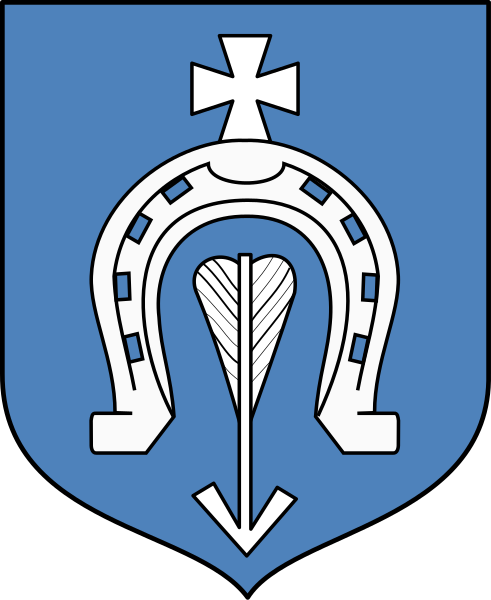 Alternate names: Gniewoszów [Pol], Ginivishov [Yid], Gnyevoshuv [Rus], Gnevetchov, Gnivoshov, Gniewaszow, Russian: Гневошув. גנייבושוב-Yiddish. 51°28' N, 21°48' E, 28 miles E of Radom, 13 miles SE of Kozienice, 8 miles NW of Puławy. 1900 Jewish population: 523.
Alternate names: Gniewoszów [Pol], Ginivishov [Yid], Gnyevoshuv [Rus], Gnevetchov, Gnivoshov, Gniewaszow, Russian: Гневошув. גנייבושוב-Yiddish. 51°28' N, 21°48' E, 28 miles E of Radom, 13 miles SE of Kozienice, 8 miles NW of Puławy. 1900 Jewish population: 523.
Yizkor: Sefer Gniewaszow (Tel Aviv, 1971). Gniewoszow, Poland (Memorial Book Gniewashow [Apr 2013])
Seat of Gmina Gniewoszów is seat of the administrative district with the villages: Boguszówka, Borek, Kociołek, Marianów, Markowola, Markowola-Kolonia, Mieścisko, Oleksów, Regów Stary, Sarnów, Sławczyn, Wólka Bachańska, Wysokie Koło, Zalesie, Zdunków, and Zwola. In 1787, 97 Jews lived there; in 19th c. the town was a joint community with Granica and then an independent community from 1918. The WWII ghetto was in Granica. When liquidated, the Jews were sent toTreblinka in November 1942.The cemetery is on Oleksowska Str. [May 2009]
Granica, 1 mi W, also used this cemetery. Alternate names: Granica [Pol], Grenitz [Yid], Gronitza, Russian: Граница. גרניצה- Hebrew. 51°28' N, 21°49' E. Słownik Geograficzny Królestwa Polskiego (1880-1902), II, p. 794: "Granica" #4. [May 2009]
CEMETERY:
- Fencing the site with no visible gravestones. [June 2016]
- October 27, 2014 - Gniewoszow ( Radom region). A ceremony will mark the restoration of the Jewish cemetery. [Sept 2014]
- US Commission No. POCE00066
Gniewoszow is in the provice of Radomskie at 51º29 N; 21º45 E, 21 km from Kozienice. The cemetery is located on Oleksowska Street. Present town population is 1,000 to 5,000 with no Jews.
- Town: Wojt Gminy, tel 49 at 26-920 Gniewoszow.
- Regional: Wojewodzki Konserwator Zabytkow, 26-600 Radom, ul. Moniuszki 5A, tel 2-13-16.
- Interested: Adam Penkalla, ul. Gagarina 9, m. 24, 26-600 Random.
The earliest known Jewish community was in the mid-18th century, maybe 1780. 1921 Jewish population was 654, about 66.4%. The last known Conservative Jewish burial was 1942. The isolated urban flat land, reached by turning directly off a public road, has no sign or plaque. The cemetery is open to all with no fence. It is currently about.5 ha in size. No stones survive. The municipality owns property used for agriculture. The adjoining property is agricultural and residential. Private visitors occasionally visit the cemetery vandalized during World War II. Within the limits of the cemetery are no structures. Security (uncontrolled access), weather erosion, and incompatible nearby development are a moderate threat. Pollution is a slight threat.
Adam Penkalla, ul. Gagarina 9, m. 24, 26-600 Random completed the survey. Documentation: I. Strecke, D/E. "Synagogengemeinde zu Oberglogau" [in] Fetsch f. Oberglogau (1925) 77. He interviewed people near the cemetery.
[UPDATE] 'This was your town' -- JFCS leader Reclaims History in Father's Polish Stetl [July 2017]
